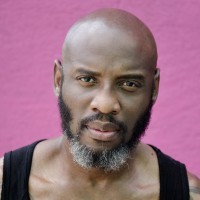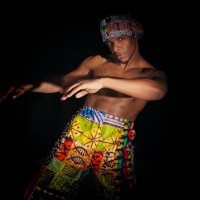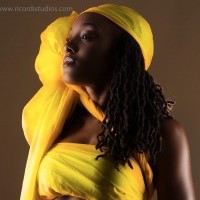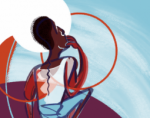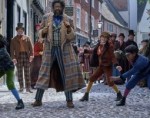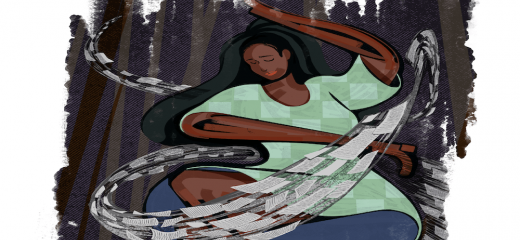
Decolonizing Dance Writing: Who is Writing for?
by Gregory King, Cecily Campbell, Ashley Brown, Patriann Edwards, Kieron Sargeant, Jazelynn Goudy
Writers write their truths, unleashing their biases on pages and damn the consequences. But what are we saying when our truths are written without critical introspection? Is dance writing equitable? Is it inclusive? When a critic writes, should their opinions serve as an entry point to deeper understanding? Writers get to describe, contextualize, analyze, and evaluate the works witnessed, but dance criticism often marinates in exclusivity, and there’s no integrity in exclusion.
Recently, I taught an online class for 92nd Y, and five writers from the Dance Criticism and Aesthetics summer course shared their thoughts and perspectives.
1. Who is the writing for? When a dance is made, when a dance is made from a set of unique physical and spatial curiosities, when a dance is made from curiosities that engage with social and cultural histories, when a dance is made through collaboration with moving bodies and minds who bring into that dance their own curiosities, their own lived histories, their own creative impulses, when a dance is made within the tangible time and place of the imaginations which stir it, the environment which forms it, the studios which give space to it, the bodies which bring dimension to it, when a dance is made to be shared, to be seen, to draw other bodies into the physical experience of it, when a dance is made and comes into discourse with the world around it - with the eyes and ears and taste and memory and longings of the people who see it, when a dance is made and not only do people see it, absorb it, talk about it, but also write about it, when a dance is made and written about, who is the writing for?
Is it for the dance makers? For the performers and the artistic collaborators? Is it for the audiences who buy tickets? Is it for the people who couldn’t see the piece and perhaps never will? Is it for the annals of time - the records of ephemeral art which seek to preserve through description what exists only in its doing? It seems that much of dance writing revolves around the question of “what.” What happened? What was it like? What were the rules? What is the verdict? So, what if the What contained more Who? Who is inside the creation of this dance and who did they come from? Who is the dance for? Who saw it? Who didn’t see it? Who is shaping our dialogue around it? Who is reflected inside the bodies of it? And who would we seek out to write about how we survive it?
Creators/performers?
Audience?
Absent?
Cecily Campbell
2. For my dad who, at the end of my MFA program, asked me what I did for 3 years.
My dad, despite having attended a variety of my dance experiences, doesn’t quite understand movement art. And with his social disconnection to dance, dance writing does very little to give him access.
I value Jazz dance forms in full context of their African roots and deep connection to social movements (historically, culturally, socially, and bodily). Though a foundational component of dance in America, Jazz dance forms have been widely missing from the concert stage and, subsequently, from many dance writings. Is it because they are rooted in social dance and represent community in a participatory performative way? According to the National Dance Educators Organization, “dance is basic to human nature . . . to study dance is to learn the language of bodily movement as it expresses and communicates the essence of humanity.” Jazz dance is a reflection of the interlaced American essence—understanding this is key to dismantling elitist attitudes towards ballet, modern, and some non-proscenium dance experiences, and to broadening our expectations of the audience.
Recently, I attended a dance performance and the theater was filled with mostly older white men and women. I said, “excuse me” to the woman sitting in the aisle seat, while pointing to my seat in the middle of the row. She looked up at me and dismissed my request with a laugh. She asked, “Are you SURE you are reading your ticket correctly and that your seat is there?” Confidently, I replied, “I’m certain” and stared at her until she moved … her eyes still questioning me.
I settled into my seat, scanned the theater and noticed more eyes questioning my presence as well … Could some of these eyes belong to dance writers? And if so, can dance writers who question me as an audience member, view performances through the same discriminatory lens? If I am excluded, so are people who look like me, including my father.
Ashley Brown
3. Often simply viewed as "festive," “cheerful,” "somber," or "cultural," this inauthentic view of diasporic dance forms often presents no engagement to the reader. It is imperative for the dance writer to foster their own mental shifts and encourage open-mindedness in pursuing research and engaged discourse of dance with artists, choreographers, and artistic directors at all times. The dance writer must understand her role as a necessary ingredient for the longevity and advocacy of the art of dance.
During my years as a university student, we read critical reviews of dance and other disciplines. This fostered the development of a broader scope of understanding in creating critiques and analyzing criticism of the performing arts. Throughout my experience as a performer and cultural researcher, I have encountered reviews of dance performance which lacked the analytical, critical, intellectual, & cultural understanding of the Black bodies, Black aesthetics, and Black awareness required to convey the true literary expression of the works presented. If this is achieved, maybe the reader, no matter their location, can find themselves transported and informed.
The mental journey of the audience should be important to the writer, as he/she is in fact an intermediary between the art and the viewing/reading audience. Shouldn’t the written work create a connective engagement with those who may have never seen the performed work, even if the writing is missing representation, has clear bias, and insensitive opinions? Is there consideration that the audience extends beyond those perimeters, extended to dance students, dance administrators, diplomatic offices, government officials, anthropologists, archivists, musicians, poets, visual artists, and others who work to consider marginalized communities in art making?
Patriann Edwards
4. I scrutinize white dance critics for their inability to understand and connect to the Black dance narratives of Black choreographers and artists from the Caribbean and African Diaspora. As a choreographer from the island of Trinidad and Tobago whose dance practices and research focus on the African Diaspora, Circum-Caribbean, and Western Africa, I have experienced a failure to adequately offer assessment and evaluation of non-Eurocentric dance forms.
Black dances from my place of birth like the bongo and limbo are heavily saturated in the call and response tradition. The use of call and response should be used as a rubric for receiving feedback, continuing Afrocentric legacies and traditions.
In Black art practices, call and response should be woven into the rubric for dance criticism as everyone in the experience from idea development to performance, engage; how the choreographer responded to their process, how the dancers responded to the music, and how the audience responded to the dance. And although symbolic and referential, it could be argued that call and response as a mode of engagement between the Black choreographer, the dancers, and the audience is rarely identified to embrace the rich, textured, nuanced contextualization when Black bodies are in dance spaces. This pulls into question whether white critics should update their rubric and widen their lens when engaging with dancers and dance forms from the diaspora. Art centered in Blackness – from Black ideologies to Black performances - is misunderstood, and by virtue misrepresented. What follows is a disservice. Black critics are needed to peel back the veil and reveal the layers otherwise missed by white critics - gatekeepers of dance criticism, who rarely challenge themselves to share the repository of information Black art holds, for everyone.
Kieron Sargeant
5. “Integrity first, service before self, and excellence in all we do.”
These are the United States Air Force (USAF) core values. In the process of creating ‘Airmen,’ they build the units by breaking down the individuals – simultaneously. Not everyone becomes an Airman, but the ones who do join an exclusive family. Much like being a dance critic - one must submit to the core values, reaping the rewards of being a part of an exclusive community.
Like in the Air Force, you must have some type of training and understanding of the field, life commitment in the mission, and be a standout individual, “Word is Bond!” (KRS One). Many go up for the challenge, and some “thrive” in shape - shifting to the supremacist ideologies without recognizing it. “The longer you’re in the culture, the more invisible it comes” - Unknown. Why? Because the rules and way of engagement aren’t culturally relevant (yet) to the breath/breadth of aesthetics in the field and the people writing about it. They expect either-or-ness. If you look like me (google me), your presence wasn’t considered a part of the culture (dance and USAF). It wasn’t until 2019 that the USAF allowed braids and dreadlocks as acceptable hairstyles. Before this, many Air(wo)men were reprimanded, sometimes costing them their livelihoods. This trend is happening in dance and writers are keeping exclusionary practices alive for the sake of tradition.
In both the USAF and dance writing, I believe the foundations were built on exclusionary practices to appease white viewers - white supremacy. If the well-regarded United States Air Force can change their practices, when will dance? We owe it to ourselves and those of the global majority.
Jazelynn Goudy
Maybe the art of dance criticism is in trouble. What if writers bore the fruit of reason and were able to re-evaluate their perceptions and preconceived notions about different dance experiences? Maybe then they’ll consider inspirations, complications, calculations, implications, and abstractions as sparks for moving dance forward.
By Gregory King
August 14, 2020

